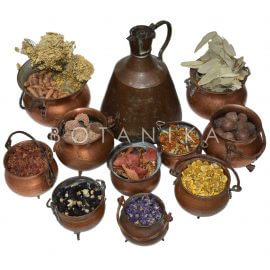Dye plants
The dye plants used are grown or foraged and the exotic dye materials are sourced sustainably. The collaboration between Botanika and the Nyim Eco Community based in Somogy county was launched in 2018. The aim of the project is selecting dye plants that can be grown successfully, experienceing their growing needs and the harvesting and seed saving best practices. During the first two years we have successfully grown dyer’s chamomile, weld, madder, black hollyhock, sulphur cosmos, dyer’s coreopsis, Hopi Red Dye amaranth, mallow and a speciality: Japanese indigo. In addition, marigolds and woad thrive in our garden in Budapest.
Fabrics
Only natural fabrics are used in Botanika – lush silk, noble wool, rustic hemp and linen and fine cotton; not only are these pleasant to wear, but also provide a richer medium for the development of natural colors.
Process
In addition to traditional immersion dyeing, Japanese shibori techniques, hammered tatakizome and steamed eco print are also used during dyeing. In every case garments are prepared for dyeing with rigorous scouring and mordanting for even dye-uptake using metal salts and organic plant-based tannins. The layers of colour build up over the coure of hours, and sometimes days in a slow and meditative process that can’t be rushed. The dye process is finished with thorough rinsing, and ironing with floral water.


